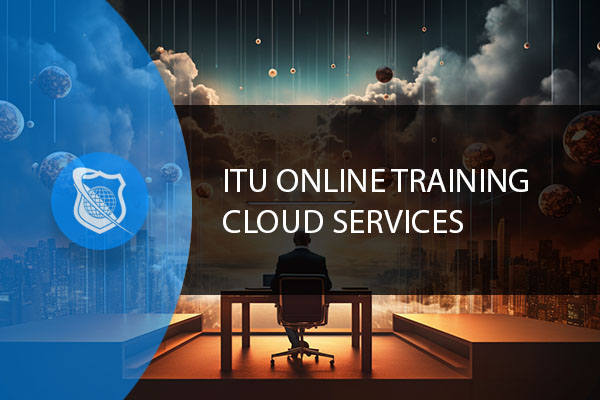What is a Hybrid App?
Definition: Hybrid App A hybrid app is a type of mobile application that combines elements of both native apps and web apps. It is developed using web technologies such as

Microsoft Azure offers robust solutions to address these needs through Azure ExpressRoute and Virtual WAN. Connecting on-premises networks to cloud services securely and efficiently remains a critical concern for many organizations. This blog post delves into the intricacies of setting up Azure ExpressRoute, its prerequisites, and how it coexists with VPN gateways. Additionally, we explore the concept of Azure Virtual WAN, a comprehensive solution that simplifies network architecture.

Become a highly skilled Microsoft Azure Administrator with our Azure administrator Career Path training series. This path include the core skills for Cloud, Network and Security with the CompTIA courses and then follows-up with our comprehensive AZ-104 Azure Administrator course. Elevate your career today.
Azure ExpressRoute is a service that allows you to extend your on-premises networks into the Microsoft cloud over a private connection facilitated by a connectivity provider. This service offers a more reliable, faster, and lower-latency connection than typical internet-based connections, making it ideal for scenarios requiring high-performance, secure, and predictable connectivity. Here’s a detailed breakdown of setting up Azure ExpressRoute, including prerequisites and steps needed:
Before setting up ExpressRoute, several prerequisites must be met:
Setting up ExpressRoute involves several key steps:
Azure ExpressRoute provides a direct and dedicated connection to Azure, offering enhanced security, reliability, and performance compared to internet-based connections. Proper setup and management of ExpressRoute can significantly improve your cloud computing experience, enabling more efficient operations and a seamless hybrid cloud environment.
Unlock the world of cloud computing with our CompTIA Cloud+ training course! Master the skills to build, optimize, and ensure high availability in complex cloud environments. Prepare to ace the CompTIA Cloud+ CV0-003 exam with confidence. Your path to certification starts here!
The coexistence of Azure ExpressRoute and VPN Gateways is a powerful setup that ensures high availability, reliability, and secure connectivity between your on-premises network and Azure. This hybrid networking approach allows you to use ExpressRoute for a dedicated, low-latency connection to Azure while also leveraging VPN gateways as a failover solution for resilience. Here’s how to effectively implement and manage this coexistence:

Become a highly skilled Microsoft Azure Administrator with our Azure administrator Career Path training series. This path include the core skills for Cloud, Network and Security with the CompTIA courses and then follows-up with our comprehensive AZ-104 Azure Administrator course. Elevate your career today.
In summary, the coexistence of Azure ExpressRoute with VPN Gateways offers a robust networking solution that combines the high performance and reliability of ExpressRoute with the failover capabilities of VPN Gateways. By carefully planning, implementing, and managing this setup, organizations can ensure continuous connectivity to Azure, even in the face of network disruptions.

At ITU, we offer an exclusive Cloud Computing training series designed to prepare you for certification and/or to help you gain knowlege of all Cloud based platforms including AWS, Azure and Gooogle Cloud.
Get access to this exclusive Cloud Computing Training today.
Azure Virtual WAN (vWAN) represents a pivotal advancement in cloud networking, aiming to simplify the network architecture by integrating various networking, security, and routing functionalities into a unified, scalable, and easy-to-manage service. This service is particularly beneficial for organizations looking to streamline their connectivity between on-premises networks, Azure resources, and other cloud environments. Below, we explore the key features of Azure Virtual WAN, alongside insights into its implementation and management.
Implementing and managing Azure Virtual WAN involves several steps, aimed at consolidating various networking functions into a streamlined service. Here’s a brief overview of the implementation process and management considerations:
Azure Virtual WAN represents a significant leap forward in simplifying complex network architectures, especially for organizations with extensive branch networks or those requiring seamless, secure connectivity to Azure and beyond. By consolidating networking functions into a single, manageable service, Azure Virtual WAN not only simplifies deployment and management but also enhances performance and security across the network. Its scalable, global infrastructure ensures that organizations can expand their networks efficiently, backed by the robustness and reliability of the Azure ecosystem.
Azure ExpressRoute and Virtual WAN offer powerful solutions for organizations looking to enhance their cloud connectivity. ExpressRoute provides a dedicated, high-speed link to Azure services, ensuring optimal performance and security. In contrast, Azure Virtual WAN simplifies network architecture, offering a unified, scalable approach to managing global connectivity. By leveraging these services, organizations can achieve a more secure, reliable, and efficient connection to the cloud, driving their digital transformation efforts forward.
Understanding the key terms related to Azure ExpressRoute and VPN Gateway Integration is crucial for professionals and enthusiasts navigating the complex landscape of cloud networking and security. These terms form the foundation of discussions, implementations, and optimizations in cloud infrastructure, particularly in hybrid cloud setups where secure, reliable connectivity is paramount. Familiarity with these terms not only facilitates smoother communication among team members but also enhances one’s ability to design, troubleshoot, and manage network integrations between on-premises environments and Azure cloud services effectively.
| Term | Definition |
|---|---|
| Azure ExpressRoute | A service that provides a private connection between an organization’s on-premises infrastructure and Microsoft Azure data centers, bypassing the internet for enhanced security and reliability. |
| VPN Gateway | A type of virtual network gateway in Azure that sends encrypted traffic across a public connection to an on-premises location, acting as a secure bridge. |
| Virtual Network (VNet) | An isolated network within the Azure cloud that allows Azure resources to securely communicate with each other, the internet, and on-premises networks. |
| Peering | The process of connecting two separate networks for the purpose of sharing resources and data. In Azure, it can refer to VNet peering or ExpressRoute peering. |
| GatewaySubnet | A specific subnet within an Azure VNet dedicated to hosting virtual network gateways, including VPN Gateway and ExpressRoute Gateway. |
| ExpressRoute Circuit | A logical connection between an on-premises network and Azure through an ExpressRoute provider, enabling private connectivity. |
| SKU | Stock Keeping Unit, in Azure, refers to the size or tier of an ExpressRoute or VPN Gateway, dictating performance, features, and cost. |
| S2S VPN | Site-to-Site VPN, a connection that links an entire on-premises network to a virtual network in Azure, typically using a VPN Gateway. |
| P2S VPN | Point-to-Site VPN, a connection that allows individual devices to connect to an Azure VNet, often used for remote worker access. |
| BGP (Border Gateway Protocol) | A protocol used for exchanging routing information between different networks on the internet, crucial for routing decisions in ExpressRoute connections. |
| ASN (Autonomous System Number) | A unique identifier allocated to each network on the internet, used in BGP routing to specify policy routes between different autonomous systems. |
| SLA (Service Level Agreement) | A contract between a service provider and a customer that specifies the performance and availability standards the service is expected to meet. |
| Redundancy | The duplication of critical components or functions of a system with the intention of increasing reliability of the system, usually in the form of backup or failover solutions. |
| Direct Peering | A type of ExpressRoute peering that allows direct connection to Microsoft’s services without traversing the public internet. |
| Exchange Peering | A type of ExpressRoute peering designed for connectivity to Microsoft Cloud services across all regions, except those in China and government clouds. |
| ER-Gateway | ExpressRoute Gateway, a gateway deployed in an Azure VNet for connectivity to an ExpressRoute circuit. |
| Local Network Gateway | An Azure resource that represents an on-premises VPN device or network and its settings for a Site-to-Site VPN connection. |
| Public IP Address | An IP address that is routable on the internet, assigned to Azure resources to enable communication with the internet and external networks. |
| Private IP Address | An IP address within a VNet or on-premises network that is not routable on the internet, used for internal network communication. |
| Azure Resource Manager (ARM) | A deployment and management service in Azure that provides a management layer enabling users to create, update, and delete resources in their Azure account. |
| Network Security Group (NSG) | A filtering security mechanism in Azure that controls inbound and outbound traffic to network interfaces (NIC), VMs, and subnets. |
| ExpressRoute Global Reach | A feature that allows connecting two or more ExpressRoute circuits together, enabling private data exchange across geographically dispersed locations. |
| Latency | The time taken for data to travel from its source to its destination, critical in network performance and user experience. |
| Throughput | The rate at which data is transmitted between locations within a network, often measured in megabits per second (Mbps) or gigabits per second (Gbps). |
| MPLS (Multiprotocol Label Switching) | A routing technique in telecommunications networks that directs data from one node to the next based on short path labels rather than long network addresses. |
This comprehensive list encompasses the essential terminology for professionals working with Azure ExpressRoute and VPN Gateway Integration, providing a solid grounding in the subject matter.
Azure ExpressRoute is a service that allows you to create a private connection between your on-premises infrastructure and Microsoft Azure data centers. This connection is facilitated through a connectivity provider and does not traverse the public internet, providing higher security, reliability, and lower latencies compared to traditional VPN connections. Unlike VPNs, which encrypt data over the internet, ExpressRoute provides a dedicated, direct connection that can offer more consistent performance and bandwidth.
Yes, Azure ExpressRoute can be used to connect to various Microsoft online services including Office 365 and Dynamics 365. This requires configuring Microsoft Peering on your ExpressRoute circuit, which allows you to exchange traffic for a wide range of Microsoft services beyond just Azure.
Azure ExpressRoute offers a range of bandwidth options to suit different needs, starting from 50 Mbps and going up to 10 Gbps for standard circuits. For those requiring higher bandwidth, Microsoft also offers ExpressRoute Direct, which supports up to 100 Gbps.
To ensure redundancy and high availability, it is recommended to set up redundant ExpressRoute circuits through different connectivity providers or different peering locations. Additionally, integrating ExpressRoute with a VPN gateway as a failover path can provide further resilience against connectivity issues.
The pricing for Azure ExpressRoute includes charges for the port fees based on the bandwidth capacity of the circuit and outbound data transfer fees. Port fees are fixed monthly charges, while data transfer fees vary based on the volume of data moving out of Azure over the ExpressRoute connection. Note that inbound data transfer to Azure is generally free of charge. Pricing can also vary based on the region and the service provider chosen for the connection. It’s important to consult the Azure pricing page or contact a Microsoft sales representative for the most current and detailed pricing information.
Lorem ipsum dolor sit amet, consectetur adipiscing elit. Ut elit tellus, luctus nec ullamcorper mattis, pulvinar dapibus leo.
$49.99 Original price was: $49.99.$16.99Current price is: $16.99. / month with a 10-day free trial
Definition: Hybrid App A hybrid app is a type of mobile application that combines elements of both native apps and web apps. It is developed using web technologies such as
Definition: Federated Cloud A federated cloud, also known as a cloud federation, is a system in which multiple cloud computing environments are interconnected to provide a unified, seamless experience for
Definition: Bit-Interleaved Coded Modulation (BICM) Bit-Interleaved Coded Modulation (BICM) is a technique used in digital communications to improve the reliability and efficiency of data transmission. It combines error-correcting codes with
Definition: Open Directory Project The Open Directory Project (ODP), also known as DMOZ (from its original domain directory.mozilla.org), is a comprehensive directory of web resources that are categorized by human
Definition: Network Appliance A network appliance is a specialized device designed to manage, monitor, or enhance network traffic. These appliances often provide dedicated hardware and software to optimize network performance,
Definition: Virtual Service Network (VSN) A Virtual Service Network (VSN) is a type of network architecture that provides a virtualized network environment, allowing multiple services and applications to operate over
Definition: Traceroute Traceroute is a network diagnostic tool used to track the path that data packets take from one computer to another over an IP network. It helps in identifying
Definition: Network Operating System (NOS) A Network Operating System (NOS) is specialized software designed to manage and coordinate network resources, services, and data across multiple computers. It allows network devices
Definition: Network Security Incident A network security incident is an event or series of events that pose a threat to the integrity, availability, or confidentiality of a network and its
Definition: Honeynet A honeynet is a network set up with intentional vulnerabilities designed to invite cyberattacks in order to study how hackers operate. It consists of multiple honeypots, which are
Definition: Internal Network An internal network is a private network within an organization or home that connects various devices and systems, allowing them to communicate and share resources securely. This
Definition: Token Ring Token Ring is a type of computer networking architecture in which nodes are arranged in a logical ring and pass a token to control access to the
ENDING THIS WEEKEND: Train for LIFE at our lowest price. Buy once and never have to pay for IT Training Again.